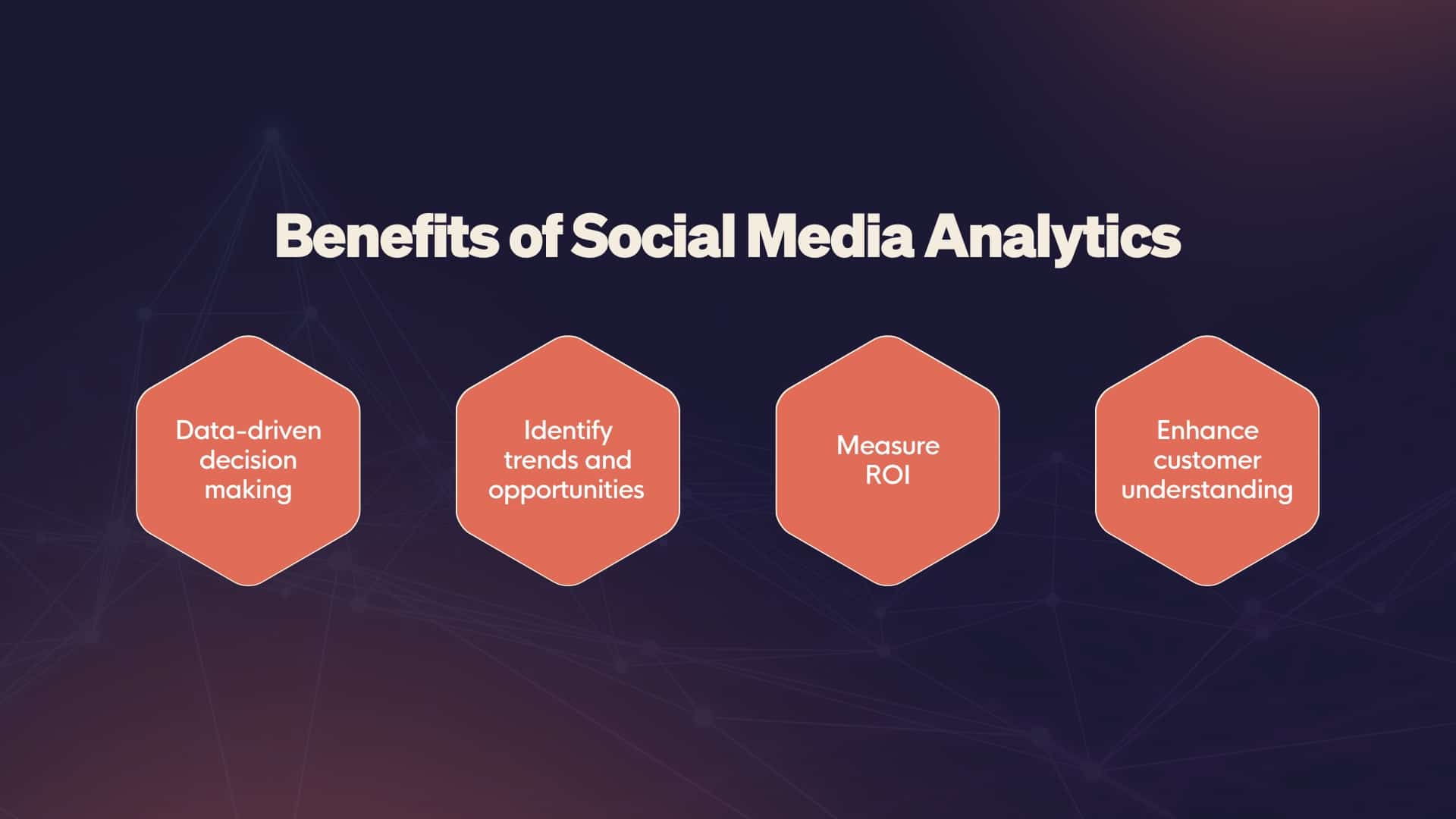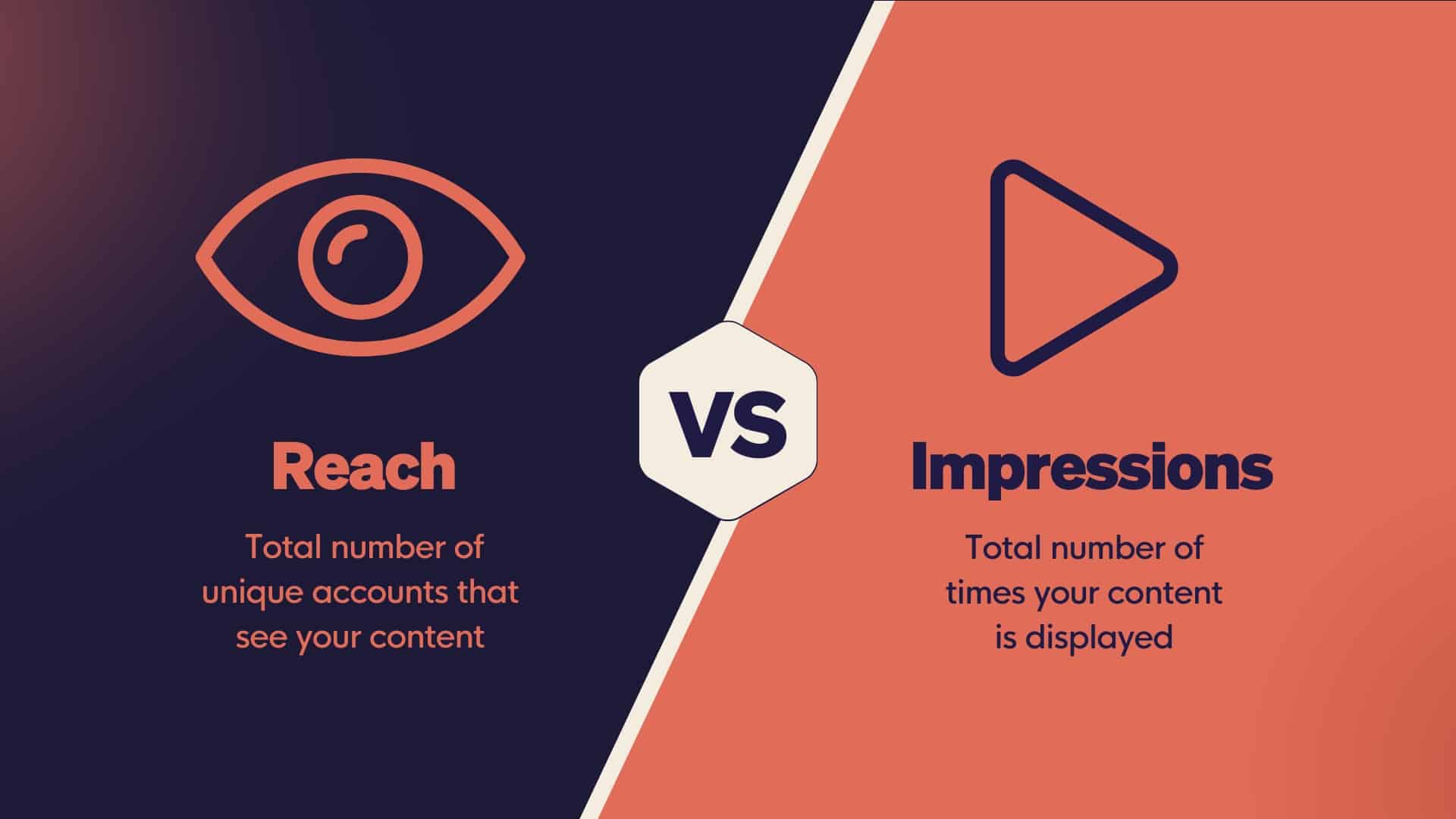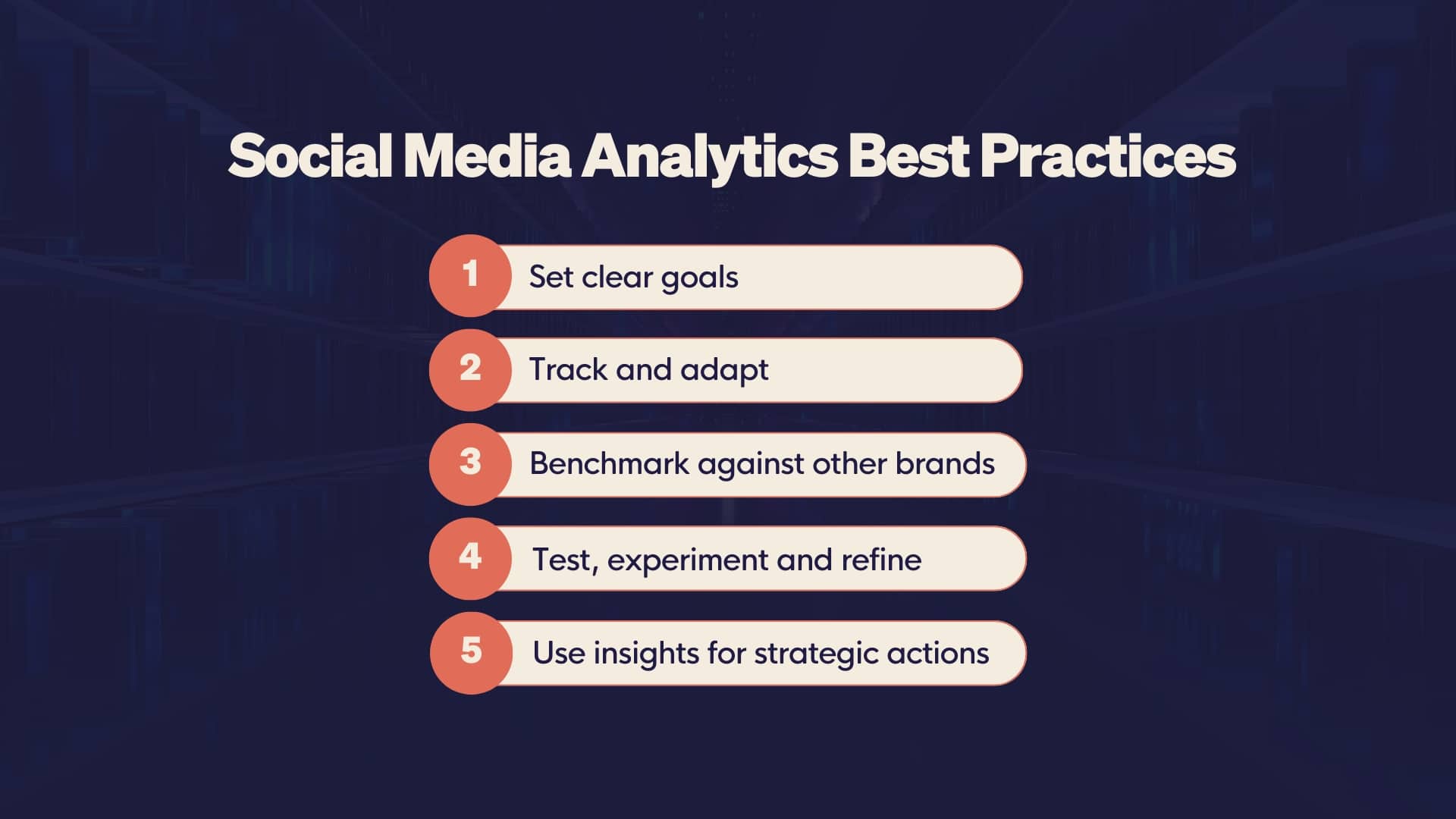Understanding Your Social Media Analytics to Measure Success
Social media has become an indispensable tool for brands of all sizes. It offers a direct line to customers, enhances brand visibility and drives sales. However, simply having a presence on social platforms isn’t enough. To truly harness the power of social media, you need to know if your efforts are making an impact. The answer lies in social media analytics. By understanding and utilising the data at your fingertips, you can refine your strategy, boost engagement and ultimately drive meaningful business growth
Why does it matter?
Social media analytics is the process of gathering and interpreting data about your audience, content performance and overall social media presence. This information provides valuable insights into what’s working and what’s not, allowing you to make informed decisions about your marketing strategy. By leveraging these insights, you can optimise your efforts in several key areas:
1. Data-driven decision making:
Social media analytics equips you with concrete data, so you can make decisions based on actual performance rather than assumptions. This leads to more precise targeting, better content creation and, ultimately, more successful campaigns.
2. Identifying trends and opportunities:
Analytics help you spot trends in real-time, which helps you capitalise on emerging opportunities or pivot quickly if something isn’t working. Whether it’s a sudden spike in engagement on a particular type of post or a new demographic showing interest in your brand, these insights can be game-changing.
3. Measuring ROI:
One of the biggest challenges in social media marketing is proving its value. Social media analytics allows you to measure the return on investment (ROI) of your efforts by linking social media activities directly to business outcomes, such as lead generation, conversions or sales. This is crucial for justifying your marketing spend and optimising your budget.
4. Enhancing customer understanding:
By analysing data on user behaviour, preferences and feedback, you can gain a deeper understanding of your audience. This helps in creating content that resonates with your audience. You can personalise your approach, build stronger customer relationships and enhance overall customer satisfaction.
5 key metrics to track using social media analytics
To truly measure the success of your social media efforts, focus on the metrics that align with your business goals. Here are some of the key metrics you should be tracking with social media analytics tools:
1. Engagement rate
Engagement rate measures how much your audience interacts with your content. It includes likes, comments, shares and clicks. A high engagement rate indicates that your content resonates with your audience.
2. Reach and impressions
Reach represents the number of unique users who have seen your content. It gives you insight into how widespread your message is. Impressions count how many times your content has been displayed, regardless of whether it was interacted with or not. These metrics help you understand the visibility and potential impact of your social media efforts.
3. Follower growth
Social media analytics tools can track follower growth, which shows the increase (or decrease) in your social media audience over time. A growing follower base can be a sign that your content is attracting attention and that your brand is gaining popularity.
4. Conversion rate
Conversion rate is the percentage of users who take a desired action after interacting with your social media content, such as making a purchase, signing up for a newsletter or downloading a resource. This metric is directly tied to your business goals and is a critical measure of your social media strategy’s effectiveness.
5. Customer sentiment
Customer sentiment analysis involves understanding the tone and emotion behind what your audience is saying about your brand on social media. Positive sentiment can indicate strong brand loyalty and satisfaction, while negative sentiment may highlight areas that need improvement.
Social media analytics tools brands can use
To effectively track and analyse your social media performance, you need the right tools. Here are some of the most popular and powerful options available:
1. Native analytics tools
Each social media platform offers its own set of analytics tools:
- Facebook Insights — Provides detailed metrics on page views, likes, reach and engagement.
- Instagram Insights — Offers data on impressions, reach, profile visits and follower demographics.
- X / Twitter Analytics — Tracks tweet activity, audience growth and engagement rates.
- TikTok Analytics – Tracks video views, engagements, audience demographics, and conversions.
These social media analytics tools are essential for platform-specific insights and allow you to dive deep into how your content is performing on each network.
2. Google Analytics
Google Analytics is a must-have for tracking traffic from social media to your website. By setting up UTM parameters, you can track how users interact with your site after clicking through from social media, giving you a clear view of how social media contributes to your overall web traffic and conversions.
3. Third-party social media analytics tools
For brands managing multiple social media accounts, third-party tools like Hootsuite, Buffer and Sprout Social provide a comprehensive overview. These platforms offer advanced features such as cross-platform analytics, post-scheduling and custom reporting. Manage your entire social media strategy from a single dashboard.
4. Social listening tools
Tools like Brandwatch and Mention help you monitor conversations around your brand, competitors, and industry in real-time. This allows you to respond quickly to customer feedback, spot emerging trends and engage with your audience more effectively.
Best practices for leveraging social media analytics
Understanding and using social media analytics is an ongoing process. To get the most out of your data, follow these best practices:
1. Set clear social media goals
Before diving into social media analytics, establish clear and measurable objectives for your social media efforts. Whether it’s increasing brand awareness, driving traffic to your website or generating leads, creating specific goals will help you focus on the right metrics and track your progress effectively.
2. Continuously track and adapt to trends
Social media is dynamic, with trends and audience behaviours changing frequently. Regularly monitoring your social media analytics enables you to stay on top of these changes to keep your strategy effective and relevant. Notice a sudden increase in engagement with short-form videos? Consider adapting your content plan to include more of this format. By staying attuned to emerging trends and shifts in audience preferences, you can continuously refine your approach and keep your brand aligned with what resonates most with your followers.
3. Benchmark against brand competitors
Comparing your performance to industry benchmarks and competitors offers valuable insights. By evaluating how your brand measures up — whether in engagement rates, follower growth or content reach — you can identify strengths and areas for improvement. For instance, if a competitor excels with video content, consider incorporating more videos into your strategy. Benchmarking helps you refine your approach and stay competitive.
4. Test, experiment and refine your strategy
Embrace experimentation by trying out different types of content, posting times and strategies. Understanding social media analytics allows you to use tools like A/B testing to compare various approaches, such as different headlines or visuals, to determine what resonates best with your audience. Continually test and refine your tactics to make data-driven decisions that enhance your social media effectiveness.
5. Transform insights into strategic actions
The real value of social media analytics lies in applying the insights you gain. For instance, if your analytics reveal that posts featuring user-generated content receive significantly higher engagement, you can adjust your content strategy to include more of this type of content. Use the data to refine your content strategy, optimise your campaigns and improve your overall social media presence.
Maximise your social media impact with Eight Clients’ analytics expertise
Social media analytics gives brands a way to unlock digital success. At Eight Clients, we built in analytics into our social media consultancy service: to deliver insights into audience behaviour and preferences. By analysing performance data, we empower you to refine strategy, improve engagement and drive meaningful business growth.
Turn raw data into actionable insights that propel your brand forward. Get started with social media analytics at Eight Clients today!









